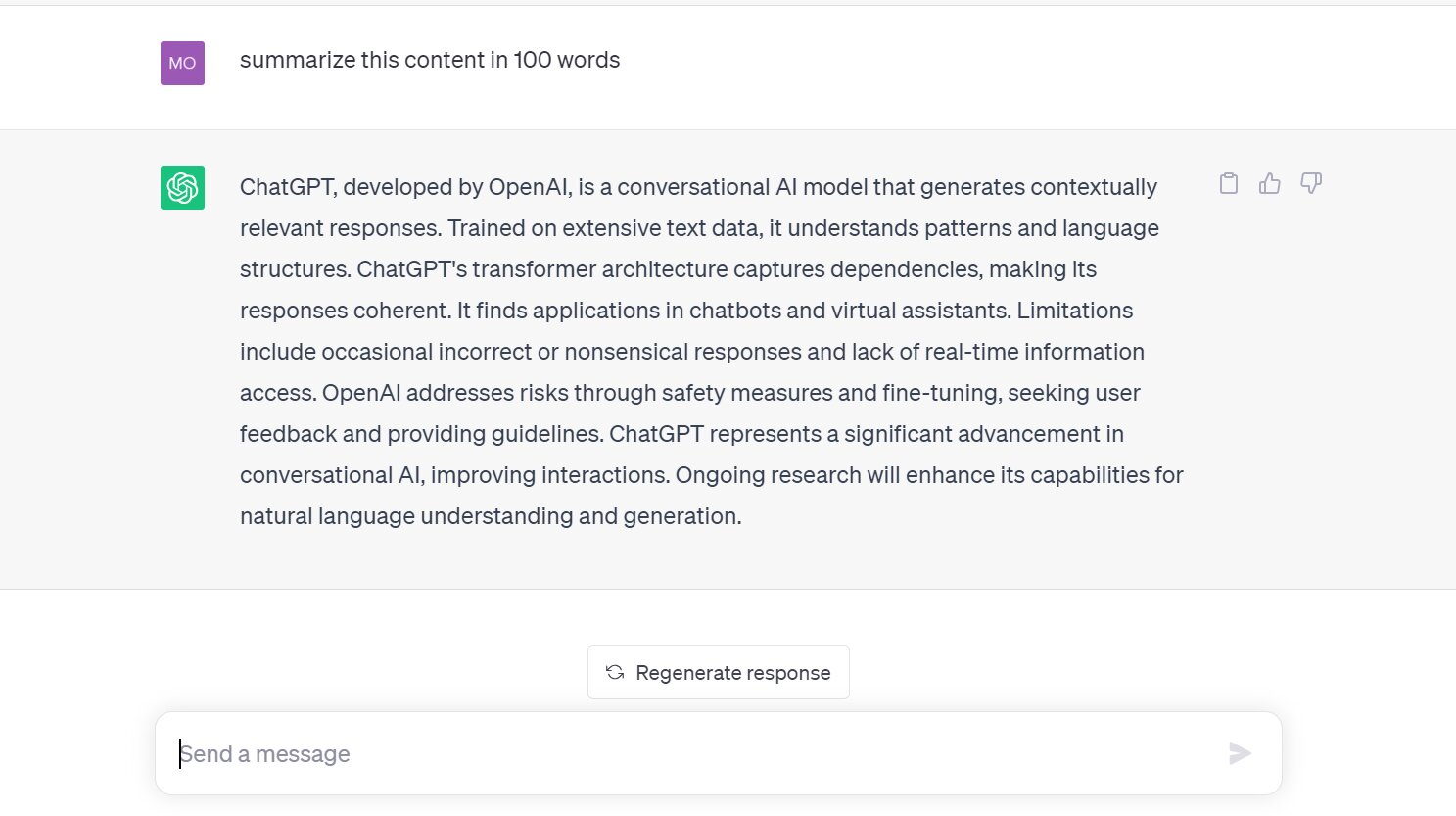The Role of Large Language Models in Advancing AI: A Comprehensive Review
In this article you will learn how large language models are helping in artificial advancement. We will cover evolution of large language model, real-life examples and how it will evolve in future.
Large language models have emerged as game-changers in the field of AI, advancing natural language processing, content generation, translation, and conversational agents. Their ability to understand and generate human language at scale has opened new avenues for innovation and improved human-machine interactions. While challenges remain, ongoing research and development are focused on mitigating ethical concerns and refining the capabilities of these models further. In this article we will learn that how Large language models advancing AI and shaping the future of human-computer interaction.
Table of Contents
Best-suited Generative AI courses for you
Learn Generative AI with these high-rated online courses
What is a Large Language Model?
The large Language Model (LLM) is a basic model that uses deep learning for natural language processing (NLP) and natural language generation (NLG) tasks. Large language models are pre-trained with large amounts of data to facilitate learning language complexity and connectivity. Large Language Models (LLMs) represent a major advance in artificial intelligence and aim to transform domains through learned knowledge. In recent years, the size of LLMs has grown tenfold each year, and as models have grown in complexity and size, so has their functionality.
For more knowledge, check this–Large Language Model: Examples, Use Cases and it’s Future.
Evolution of Large Language Model
| Year | Model | Key Features |
| 2010 | GPT (Generative Pretrained Transformer) | Pre Training using unsupervised learning |
| 2018 | OpenAI GPT-2 | Increased model size and parameter count |
| 2019 | BERT (Bidirectional Encoder Representations from Transformers) | Pretraining using masked language modeling |
| 2019 | XLNet | Overcoming the limitations of sequential dependency modeling |
| 2020 | T5 (Text-to-Text Transfer Transformer) | Unified architecture for various NLP tasks |
| 2020 | GPT-3 | Massive model size and improved language generation |
| 2021 | Codex | AI model specifically designed for programming tasks |
| 2022 | GPT-4 | Enhanced performance and advanced language understanding |
Real-life Examples of Large Language Model
1. Chatbots and Virtual Assistants
Large language models power conversational agents like chatbots and virtual assistants. For instance, companies like Google, Microsoft, and Amazon leverage these models to improve the conversational abilities of their virtual assistants, such as Google Assistant, Microsoft Cortana, and Amazon Alexa. These virtual assistants can understand user queries, provide information, perform tasks, and engage in natural and contextually relevant conversations.
2. Content Generation and Writing Assistance
Large language models have been employed to generate content in various forms. For instance, they can generate news articles, blog posts, product descriptions, and social media updates. OpenAI’s GPT-3 has been used to automatically generate code snippets based on user descriptions, aiding developers in writing code more efficiently. Additionally, these models can assist writers by suggesting ideas, completing sentences, or providing creative prompts.


3. Language Translation
Large language models have significantly improved machine translation capabilities. For example, Google’s neural machine translation system employs large language models to provide more accurate and fluent translations across multiple languages. These models can capture contextual nuances and produce translations closer to human-level quality, enhancing cross-language communication and accessibility.
4. Question Answering Systems
Large language models have been utilized in question-answering systems, where they can understand and respond to user queries based on available knowledge. OpenAI’s GPT-3 has been employed to build question-answering systems that provide detailed responses to various questions. This application has implications for customer support, education, and information retrieval.
5. Content Summarization
Large language models can effectively summarize lengthy documents or articles, condensing the key information into shorter formats. This capability is valuable in news aggregation, research paper summaries, and content curation. These models can extract the most important details and provide concise summaries that capture the essence of the original text.
6. Language Modeling and Pretraining
Large language models are powerful tools for language modelling and pretraining. They can be fine-tuned for specific tasks and domains, enabling developers to leverage their trained knowledge and adapt them to more specialized applications. For instance, companies can fine-tune models for sentiment analysis, document classification, or entity recognition, allowing them to handle specific NLP tasks with improved accuracy.
Explore: Deep Learning Online Courses & Certifications
Must explore: Free Deep Learning and Neural Networks Courses Online



How Large Language Models Evolve in Future?
Using large-scale deep learning techniques has enabled NLP researchers to develop more advanced solutions that can be applied to real-world problems ranging from machine translation, question-answering systems, sentiment analysis etc. For instance
- Prompts: By leveraging transformer architectures like GPT3, OpenAI was able to build an AI system capable of generating human-level text based on simple prompts without any additional programming required making it possible to create entire articles, even books using only basic input parameters.
- Medical Diagnosis: Any aspect of our lives, including medical diagnosis, where doctors could leverage AI-powered diagnostic tools to make quicker decisions regarding patient care treatments, thus improving overall healthcare outcomes.
- Enhanced Communication: As LLMs continue to improve in understanding and generating human language, they can enable more natural and contextually relevant interactions between humans and machines. This includes an improved version of
- Virtual assistants
- Voice recognition systems
- Chatbots
An improved version means better and quick responses to user queries with better accuracy and ensures seamless communication.
4. Personalized AI Experiences: LLMs can personalize AI experiences by leveraging user data and preferences. LLMs can offer highly tailored recommendations, personalized content generation, and individualized assistance by analyzing vast amounts of text and user interactions. This personalization can create engaging and relevant interactions with AI systems, catering to specific user needs and interests.
5. Augmenting Human Creativity: LLMs can act as creative collaborators, assisting humans in generating innovative ideas, creative content, and artistic expressions. LLMs can inspire and enhance human creativity by understanding and generating text in diverse formats such as poetry, scripts, or music. Artists, writers, and musicians can collaborate with LLMs to explore new possibilities, overcome creative blocks, and co-create compelling works.
6. Knowledge Discovery and Insight Generation
LLMs can assist in knowledge discovery by processing and analyzing vast amounts of textual data. These models can identify patterns, extract insights, and discover valuable information within a large corporation. LLMs can contribute to advancements in data analysis, market research, and scientific discovery by uncovering hidden connections and generating meaningful insights.
7. Handling real-time applications: LLM can handle real-time applications now, also. But still, there are some fields where improvement is expected. For example
a) Real-Time Video Captioning: Real-time video captioning requires visual processing information and language understanding, which adds complexity and computational overhead.
b) Simultaneous Interpretation: Real-time translation requires immediate comprehension and generation of text or speech, often within strict time constraints is another challenging application for LLMs.
c) Voice Assistant Responsiveness: Factors such as network latency, computational resources, and the complexity of the user query can impact the time it takes for a voice assistant to generate a response. Further improvements in optimization and latency reduction techniques are needed to enhance the real-time performance of voice assistants.
Conclusion
LLMs are still under development, but they have the potential to revolutionize the way we interact with computers. In the Future, LLMs could be used to create more natural and intuitive user interfaces, provide personalized assistance, and generate new forms of creative content. If you liked this article, then do like it and share it with your friends.
FAQs
What role do large language models play in advancing AI?
Large language models have a significant impact on AI advancement. They enable new applications in natural language processing (NLP), improve machine translation accuracy, facilitate creative expression, and enhance user interfaces. They contribute to the progress of AI across various domains, including customer service, healthcare, education, and more.
In what ways do large language models enhance machine translation?
Large language models have shown improved performance in machine translation. They can accurately translate text from one language to another, overcoming challenges in language barriers and facilitating effective communication across different linguistic backgrounds.
How do large language models contribute to creative expression?
Large language models have the ability to generate creative text formats, including poems, scripts, musical pieces, and more. By learning from extensive datasets, they can produce original and engaging content, opening up new possibilities for AI-powered creativity.
Are there any challenges associated with large language models?
Yes, there are challenges related to the need for large datasets, significant computational resources, and careful evaluation. Access to large amounts of data can be a challenge, and training and using LLMs require substantial computational resources. Additionally, there is a need to address potential biases and ensure ethical considerations are met through careful evaluation and responsible usage.
This is a collection of insightful articles from domain experts in the fields of Cloud Computing, DevOps, AWS, Data Science, Machine Learning, AI, and Natural Language Processing. The range of topics caters to upski... Read Full Bio








